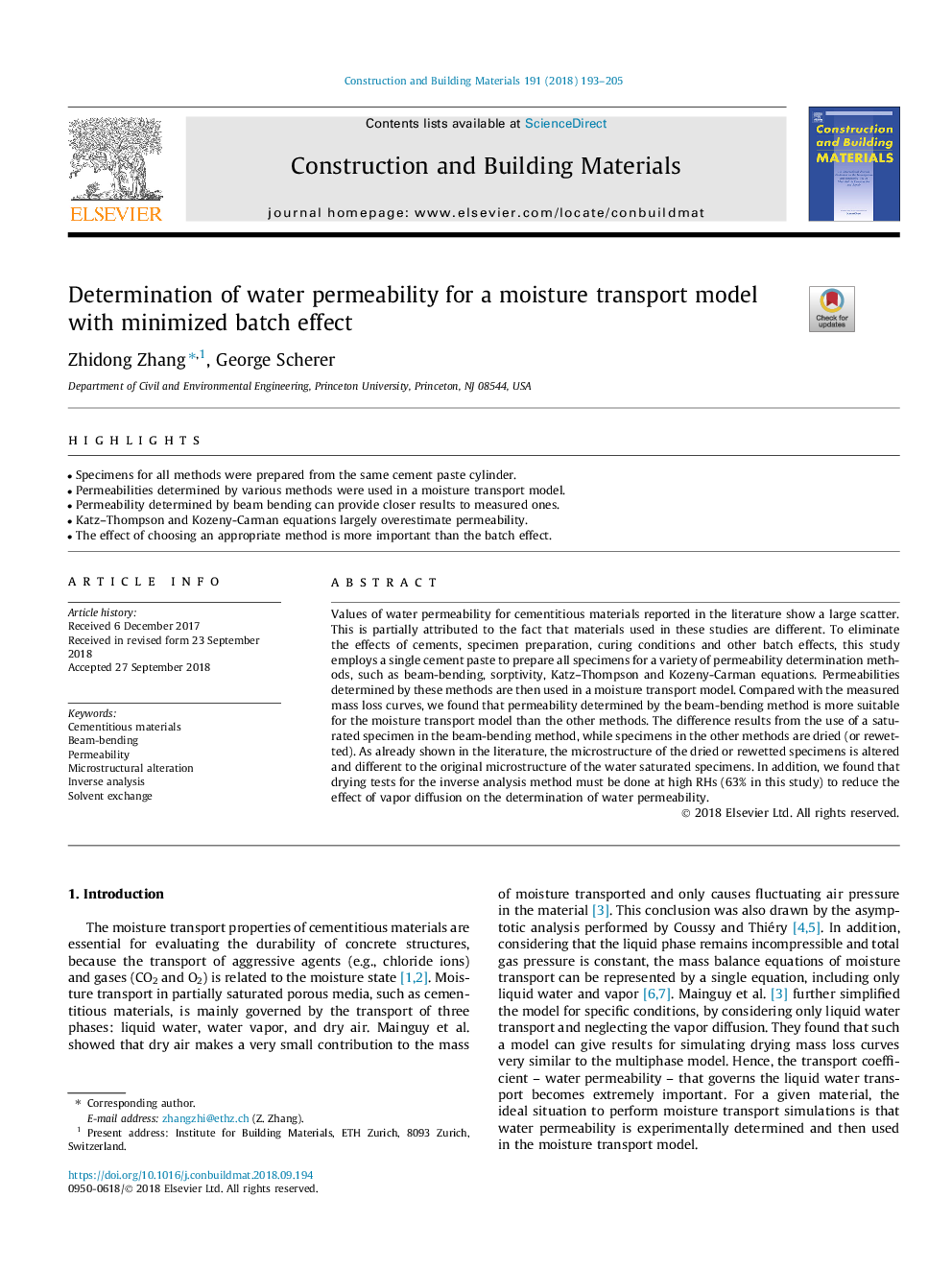| Article ID | Journal | Published Year | Pages | File Type |
|---|---|---|---|---|
| 11012621 | Construction and Building Materials | 2018 | 13 Pages |
Abstract
Values of water permeability for cementitious materials reported in the literature show a large scatter. This is partially attributed to the fact that materials used in these studies are different. To eliminate the effects of cements, specimen preparation, curing conditions and other batch effects, this study employs a single cement paste to prepare all specimens for a variety of permeability determination methods, such as beam-bending, sorptivity, Katz-Thompson and Kozeny-Carman equations. Permeabilities determined by these methods are then used in a moisture transport model. Compared with the measured mass loss curves, we found that permeability determined by the beam-bending method is more suitable for the moisture transport model than the other methods. The difference results from the use of a saturated specimen in the beam-bending method, while specimens in the other methods are dried (or rewetted). As already shown in the literature, the microstructure of the dried or rewetted specimens is altered and different to the original microstructure of the water saturated specimens. In addition, we found that drying tests for the inverse analysis method must be done at high RHs (63% in this study) to reduce the effect of vapor diffusion on the determination of water permeability.
Related Topics
Physical Sciences and Engineering
Engineering
Civil and Structural Engineering
Authors
Zhidong Zhang, George Scherer,
